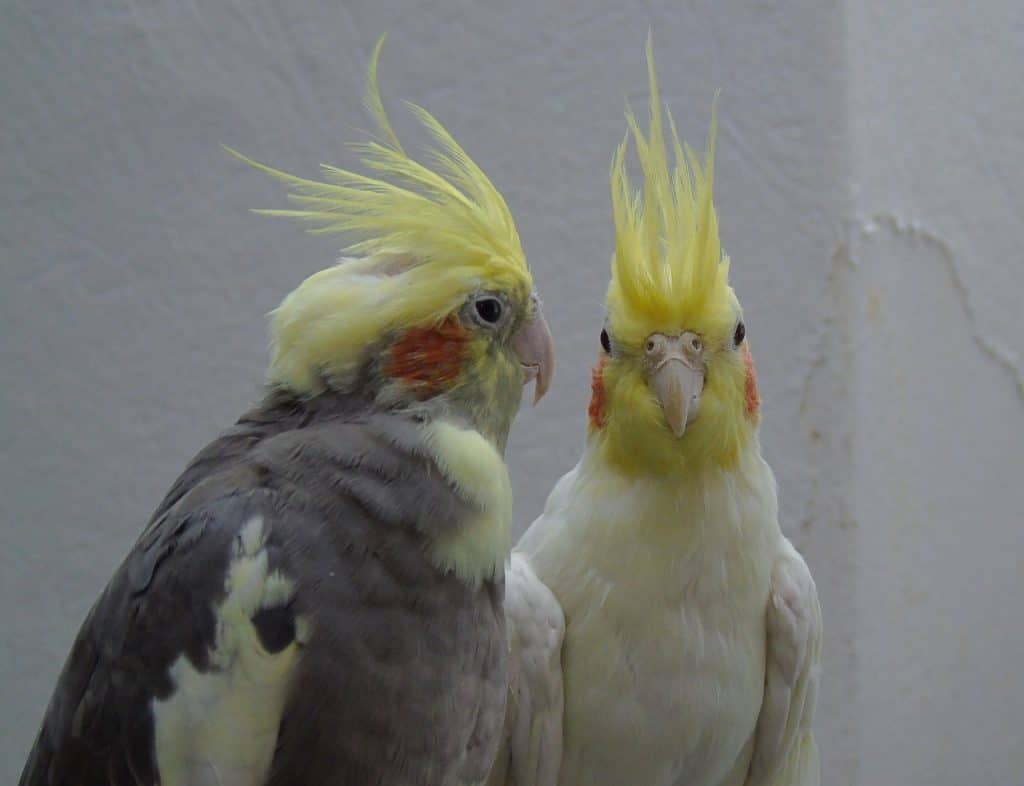
Cockatiels are one of the most beloved pet birds in the entire world. It is easy to see why. Cockatiels are friendly, affectionate, and borderline silly. They can also whistle well. Male cockatiels are known for their ability to serenade their mates and even their reflections.
These birds are very active and will fly about their rooms and cages while perching on your shoulder to show you how much they care.
Blue cockatiels simply refer to cockatiels with a blue color. They are still rare as most cockatiels are grey. The blue color is a result of a gene mutation.
Cockatiels can be kept easily and are a great choice for anyone. You must be able to give your Blue cockatiel a healthy and long life.
Species Overview
| Common names: | Blue Cockatiel |
| Scientific Name: | Nymphicus Hollandicus |
| Adult Size: | 12-13 inches long |
| Life Expectancy: | 15-25 Years |
Origin and History
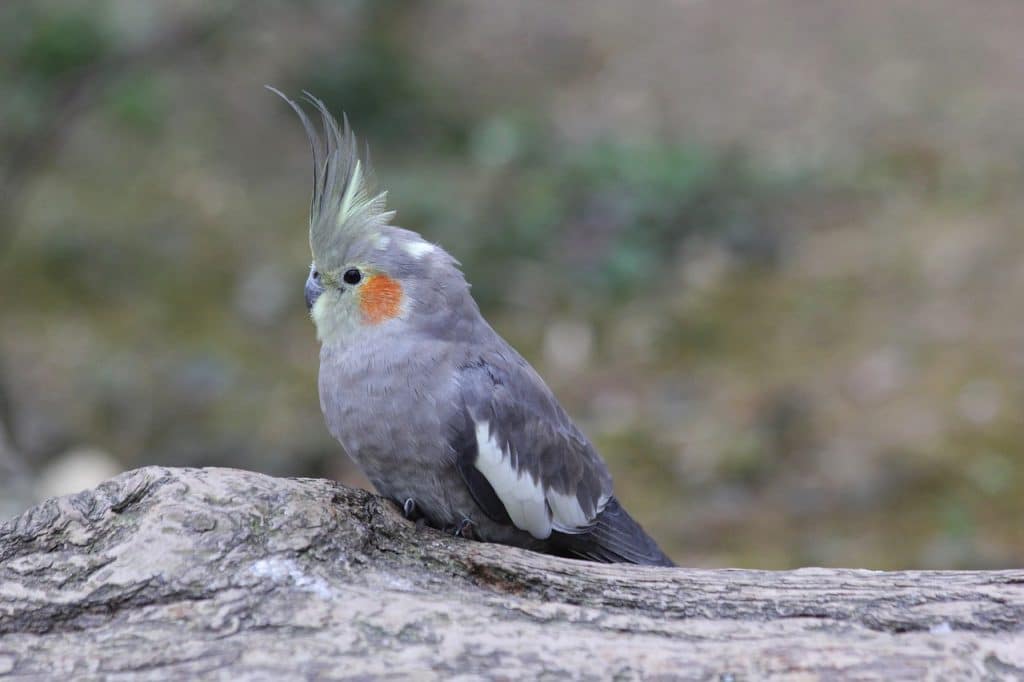
Blue cockatiels can be found in Northern Australia, including the Outback. They prefer to live in dry areas. Many believe their quiet vocals are due to living in open areas, as opposed to screeching parrots who live in dense rainforests.
Wild cockatiels are known to forage on the ground for food in their natural habitat. They are also very easy to breed, so they are readily available.
They are often called Weiros and Quarrions by those who share their habitat. This tiny member of the cockatoo family was discovered for the first time in the late 1800s. The cockatiel would be a household pet only in the 1900s.
The Australian government has currently banned trapping and exporting cockatiels.
Temperament
Blue cockatiels are known for their charming personalities. They are one of the most adorable pet cockatoos that you will ever meet. They are friendly and gentle and will happily accept your pet if you give them a pat.
Although the Blue cockatiel doesn’t mind being petted, it can become anxious if you try to cuddle it. Cockatiels are fearful birds and like to know that there is an escape route. Do not try to cuddle them, but instead hold them gently.
The position of the feathers on the crest of a Blue cockatiel’s head can tell you if they are happy or sad. If they stand straight it is a sign that the bird has curiosity or excitement. If they lie flat on their heads, it is likely that the bird feels stressed or afraid. You can tell if the bird is hissing if it is.
If your pet perceives that you are a threat, it is best to eliminate the possibility of them becoming aggressive. A relaxed cockatiel is often characterized by fluffed cheek and crest feathers.
Male cockatiels are more vocal than females. Female cockatiels are usually quiet and only communicate when necessary, such as to ask for food or treats.
However, all cockatiels need to be socially involved in order to feel fulfilled. It is a good idea to pair these birds. You should not keep a single bird if you aren’t home often. It will likely become stressed out if it doesn’t have someone to call its own.
- Parrots are smaller than parrots, making them easier to manage.
- Receptive and affectionate to training
- Perfect for those who want a calmer parrot
- Don’t do it all
Speech and Vocalizations
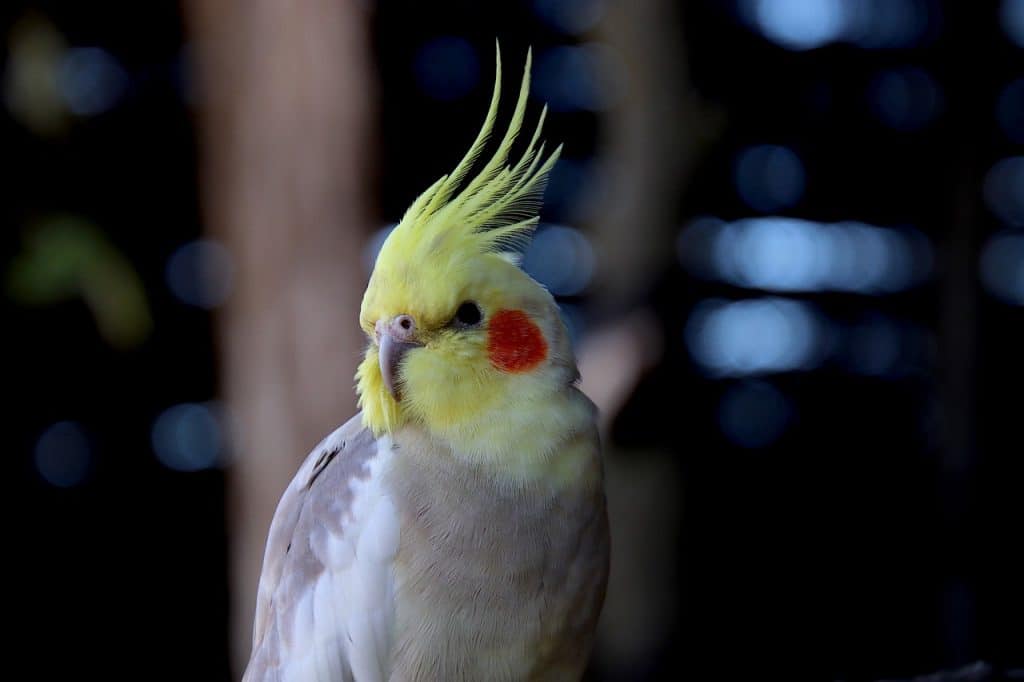
Learn the meanings of the many sounds that Blue cockatiels make to help you know when your bird feels happy, stressed, or sick.
Cockatiels love to whistle. Cockatiels love to whistle when they’re happy or to charm their mate. It is a sign that your bird is whistling all the time. Blue cockatiels prefer to sing by whistling.
These birds can also chirp, scream and hiss. Each vocalization has a meaning. When they feel threatened, blue cockatiels will scream. A blue cockatiel’s screaming is a warning sign. You should immediately investigate the cause of the noise.
Chirping means your cockatiel feels content and happy. This is often when they feel social. Most of the time your cockatiel will chirp when you are away from them for a while, and they want to spend time with you.
When cockatiels take a defensive position, they hiss to intimidate other birds or pets. Hessing is often followed by biting. Be aware of the hissing sound that your Blue cockatiel may make.
Male cockatiels can be more vocal than their female counterparts, as mentioned earlier. They are also more adept at mimicking speech and whistles. Both can imitate a variety of sounds, including alarm clocks and phones.
However, these birds aren’t as loud as other parrots.
Blue Cockatiel Markings and Colors
Today’s Cockatiels are specifically bred to produce a wider range of colors. These birds are usually only gray- or silver-colored in the wild. However, color mutations can still occur due to genetics and a bird’s melanin or lipochrome levels.
Blue and brown are common colors caused by high levels of melanin. Higher amounts of lipochromes can cause colors like red and yellow.
Blue cockatiels have high levels of melanin which is why they are color-mutated. It is important that cockatiels are not affected by their color.
Caring for the Blue Cockatiel
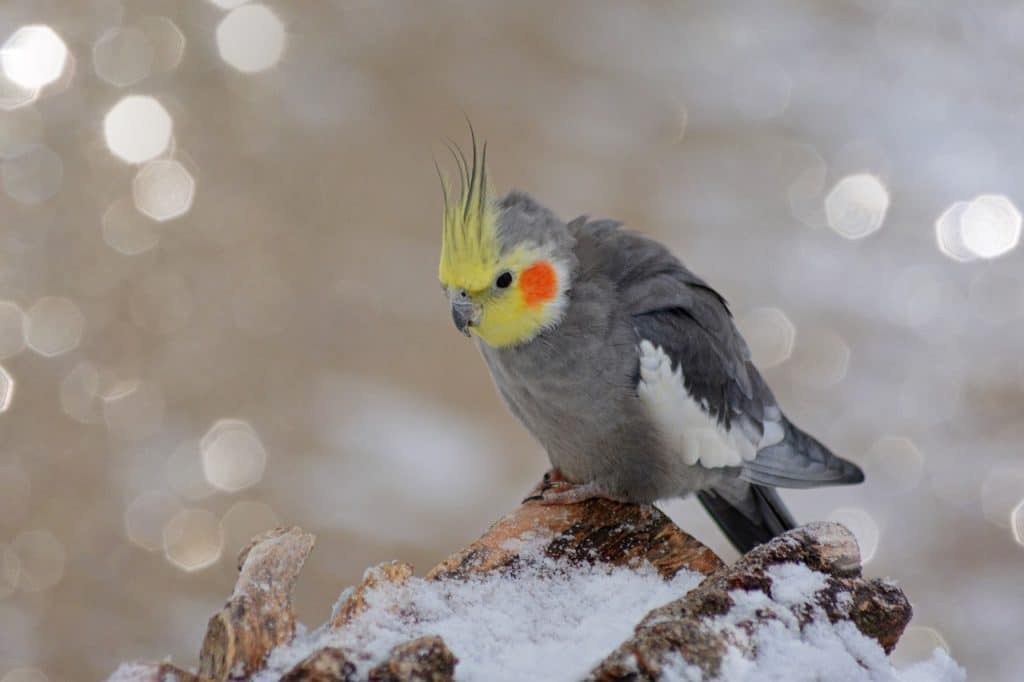
Blue cockatiels live between 15 to 25 years. However, some birds can live up to 30 years. You must give your cockatiel the best care possible to ensure it lives for as long as possible.
These birds are easy to care for. First, make sure your pet has company. You or another cockatiel could be your companion. These birds are social creatures and suffer from loneliness alone. You should be prepared to spend significant time each day with them if you don’t get them as a couple.
Also, ensure that your cage is large enough to let your bird play freely. They are very active. A cockatiel cage must have a square base, with at least 20 inches on each side and at least 26 inches high. A large front door is a plus. It allows birds to enter the cage more easily.
Wild cockatiels eat the ground, as we have already mentioned. Pet cockatiels will continue to forage the cage’s floor whenever they can. Consider covering the cage’s bottom with sawdust, sprinkle millet, or other treats to encourage your pet to search.
Blue cockatiels are messy. If you see powdery dust, it is a sign they are dirty. To keep them clean, spray or bathe them at least once per week. You should also make sure you clean their cage at least twice per week. Consider a cage that has a removable bottom to make your job easier.
Also, you will need to trim their wings and nails twice a year. If you don’t have the skills to do this job properly, it is best to leave it to an experienced avian veterinarian.
Common Health Problems
Blue cockatiels live long life because they are strong birds. They can become susceptible to certain health problems while they are in captivity, including nutritional deficiencies.
A diet dominated by seeds is the reason. They also need vitamins and minerals from vegetables and fruits.
These birds can also be at risk for fatty liver disease. This is often caused by eating a diet high in carbohydrates and not getting enough exercise.
Cockatiels, like other birds, are susceptible to many respiratory diseases. If your bird starts to exhibit respiratory symptoms like wheezing, coughing or sneezing then be sure to notify your vet immediately.
You should also be on the lookout for red flags:
- Appetite loss
- Swollen eyes
- Nasal discharge
- Preferring one foot over another
- Sitting at the bottom of the cage
- Swollen beak
- Fluffed, soiled, or plucked feathers
These are all signs that a bird is sick. You should take immediate action if you see them.
Diet and nutrition
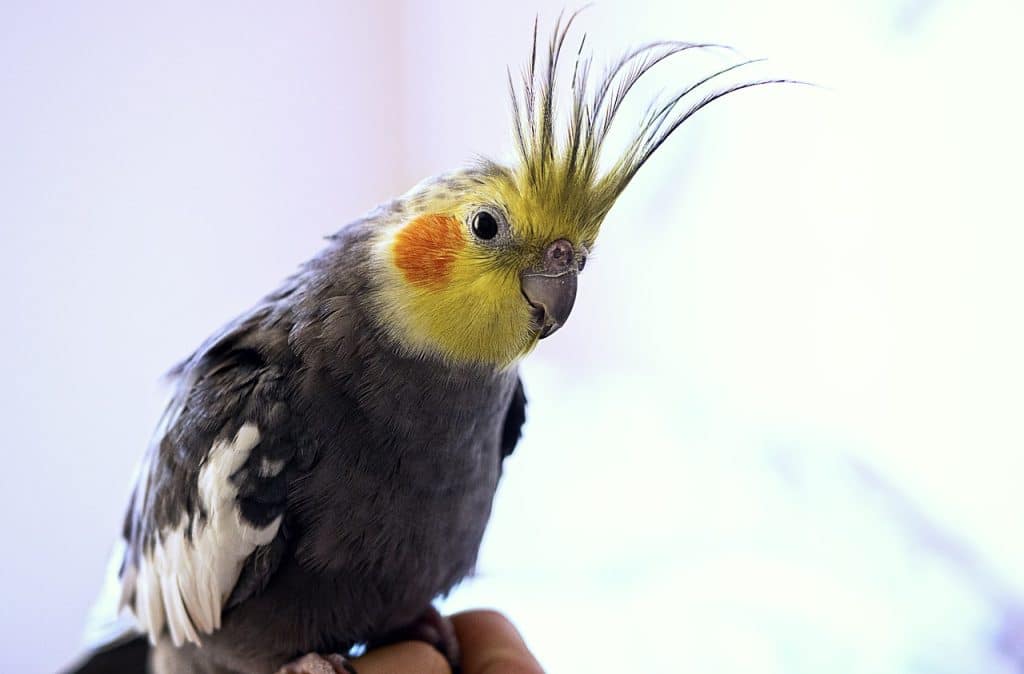
Blue cockatiels need variety in their diet. Because of their high-fat content, seeds should not be considered the final solution. They should not make up more than 30% of a cockatiel’s diet.
Pellets are a good option as they provide all the nutrition the bird needs. You can give your bird a mix of pellets and seeds every morning to ensure variety.
Exercise
Blue cockatiels need lots of mental stimulation and physical stimulation to live a happy and long life. You need to ensure the bird has enough space in its cage for it to move about and a place where it can fly around. Fans and other objects that could cause injury to the bird should be removed from the room. To prevent the bird from escaping, make sure all windows are closed.
Places to Adopt or Purchase a Blue Cockatiel
A Blue cockatiel can be purchased from an avian breeder or pet shop. They can be purchased for between $100 and $300. You should ensure that your bird is healthy before you buy it.
The ideal bird should be brightly colored and active. Avoid inactive cockatiels as they could be sick.
A rescue center may also be able to adopt an adult Blue cockatiel. Due to their rarity, Blue cockatiels are not likely to be found in rescue centers.
Conclusion
Blue cockatiels make wonderful pets. They are affectionate, attentive, and charming. They will be your best friend once you have won them over. They are also easy to maintain, which makes them great for beginners. The best thing? The best part? They can live up to 25 years. This means that you are effectively purchasing a companion for life.
Are blue cockatiels uncommon?
Blue cockatiels are one of the rarest cockatiel hues, with overall white plumage, deeper gray or black wing patterns, and a tinge of blue-gray on the tail. There are no cheek patches or yellow washes on the heads of these birds.
Which cockatiel color is best?
Cockatiel in gray. Gray cockatiels are classified as “normal” parrots since they lack pigment gene alterations. They have grey bodies with white stripes on their wings and tails
Should you buy one or two cockatiels?
Cockatiels do not need to live in couples. If your new bird is friendly and enjoys being handled, you are her buddy. Getting a male at her age would be a bad idea because you don’t want to push her to breed.
Which cockatiel can communicate?
Cockatiels, while not as verbose as other parrot species, may learn to replicate words and phrases. Male cockatiels are more likely than female cockatiels to speak.
Cockatiels are terrified of the dark?
Cockatiels appear to be more susceptible to “night frights” than any other bird species. By “night terror,” I mean that they are easily startled or disturbed amid the darkness and silence of the night.
What is the most endangered bird on the planet?
Bristlefront of Stresemann One known person is included in the estimated population. Critically Endangered according to the IUCN. Brazilian state of Bahia. Overview: Only one Stresemann’s Battlefront is known to live in the wild, making it the world’s rarest bird.
What is the Philippines’ most endangered bird?
The Philippine Eagle is a bird of prey. In 1995, the Philippine Eagle was designated as the country’s official bird. The Philippine Eagle is one of the world’s rarest birds, with an estimated population of fewer than 500 individuals.
What is the cutest bird in the planet?
So here are the top ten prettiest birds on the planet: Mountain Bluebirds (Sialia currucoides)… Goldcrests (Regulus regulus)… Long-Wattled Umbrella Birds (Cephalopterus penduliger)… Bee Hummingbirds (Mellisuga helenae)… Peach-faced Lovebirds (Agapornis roseicollis)… ATLANTIC PUFFINS (Fratercula arctica) (Todus multicolor)
What is the world’s most popular bird?
Red-billed Quelea are the birds. They are thought to number 1.5 billion, making them the most numerous of all wild birds. The Red-billed Quelea, a weaver with a robust, seed-cracking beak, is the size of a sparrow.
Are there blue cockatiels?
Cockatiels do not carry the Blue genetic mutation, but albino animals do. This mutation would be better known as the White-faced Lutino.